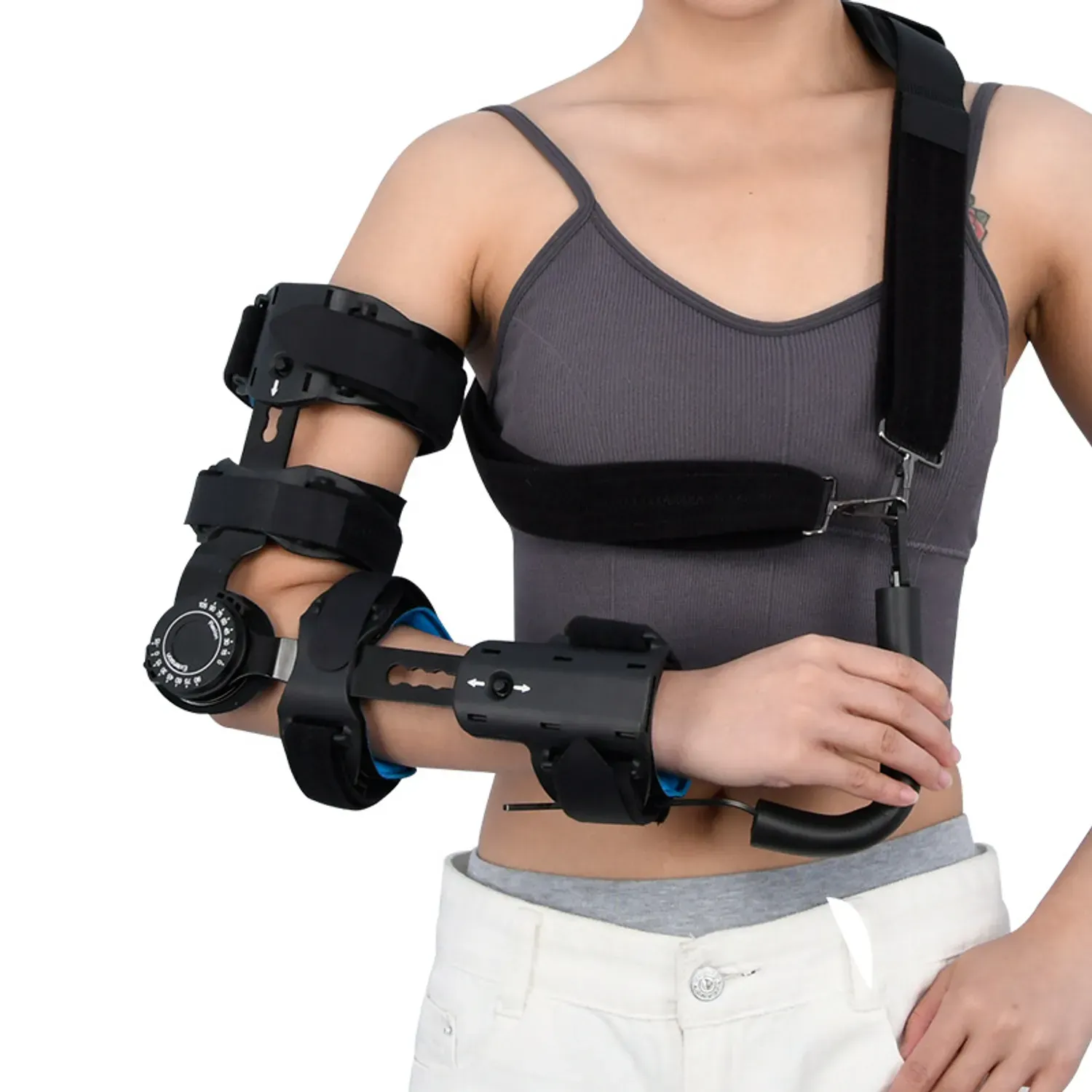john@lee-mat.com
+86-13510662576

GET QUOTE
Should an Elbow Brace Be Tight?
When dealing with elbow pain or injury, finding the right elbow brace is crucial. A common concern among users is whether the brace should be tight. Let's delve into this question and explore the factors that contribute to a well-fitted elbow brace.
The Role of an Elbow Brace
An elbow brace serves multiple functions: it provides support, reduces pain, and aids in healing various elbow-related issues such as tennis elbow or strain injuries. By applying targeted pressure to the muscles and tendons around the elbow, the brace helps alleviate stress and prevents further damage. For those in need of a reliable elbow brace supplier, Lee-Mat offers high-quality braces designed to meet your specific needs and promote effective recovery.
How Tight Should an Elbow Brace Be?
Understanding the Balance
The key to a successful elbow brace is balance. An elbow brace should be tight enough to provide the necessary support and compression to alleviate pain and promote healing. However, it shouldn't be so tight that it restricts blood flow or causes discomfort. So, should an elbow brace be tight? Yes, but with caution.
Signs of a Proper Fit
To determine if your elbow brace is fitting correctly, look for the following signs. Firstly, comfort is essential; the brace should feel snug but not excessively tight, allowing you to wear it for extended periods without significant discomfort. Secondly, it should provide noticeable support to the elbow and surrounding muscles without feeling restrictive. Lastly, while some movement restriction is normal, you should still be able to perform daily activities without severe limitations.
Warning Signs of an Overly Tight Brace
An overly tight elbow brace can do more harm than good. Watch out for these warning signs: numbness or tingling, which may indicate that the brace is too tight and restricting blood flow; swelling around the elbow or forearm, indicating poor circulation; and discoloration of the skin under the brace, which turns blue or pale, signaling restricted blood flow.
Choosing the Right Elbow Brace
Types of Elbow Braces
There are various types of elbow braces, each designed for specific conditions and needs. Understanding these types can help you choose the right one and ensure the proper fit. Compression sleeves provide general support and are often used for mild conditions or preventative measures. They should fit snugly but comfortably. Strap braces are ideal for conditions like tennis elbow as they apply targeted pressure. The strap should be tight enough to provide support but not so tight that it cuts off circulation. Hinged braces, used for more severe injuries or post-surgery recovery, offer maximum support and limit movement. The fit should be secure but adjustable to accommodate swelling.
Measuring for the Perfect Fit
Proper measurement is crucial to ensure your elbow brace fits correctly. Here's how to measure your arm for the perfect fit. First, measure the circumference of your forearm about 2 inches below the elbow joint using a flexible tape measure. Then, refer to the manufacturer's sizing chart to find the appropriate size based on your measurements. If your measurements fall between sizes, consider the level of support needed and choose the size that best meets your comfort and support requirements.
Conclusion
Finding the right elbow brace involves understanding the balance between support and comfort. It should be snug enough to provide the necessary compression and alleviate pain, but not so tight that it restricts blood flow or causes discomfort. Signs of a proper fit include comfort, adequate support, and maintained mobility, while warning signs of an overly tight brace include numbness, tingling, swelling, and discoloration.
For high-quality and reliable elbow braces, Lee-Mat offers an extensive range of sport and medical supports designed to enhance performance and aid in recovery. Their products are meticulously crafted to meet the specific needs of athletes and individuals seeking relief from elbow pain and injury. Trust Lee-Mat to provide you with the best support for your elbow health and overall well-being.
FAQs About Elbow Braces
Can I wear an elbow brace all day?
Wearing an elbow brace throughout the day can provide continuous support for acute injuries or chronic conditions. However, it's essential to monitor how your body responds. If you experience discomfort or restricted movement, it may be necessary to remove the brace periodically.
Should I wear an elbow brace while sleeping?
Wearing an elbow brace during sleep can help prevent inadvertent movements that could exacerbate the injury. Ensure the brace is not overly tight, as this could interfere with sleep comfort.
How do I care for my elbow brace?
Proper care ensures longevity and effectiveness. Regular cleaning is important; hand wash the brace using mild soap and water, avoiding harsh detergents that could damage the fabric. Allow the brace to air dry thoroughly before wearing it again. Avoid using a dryer, as heat can compromise its elasticity. Regularly inspect the brace for signs of wear, such as fraying or loss of compression, and replace it if it no longer provides adequate support.

